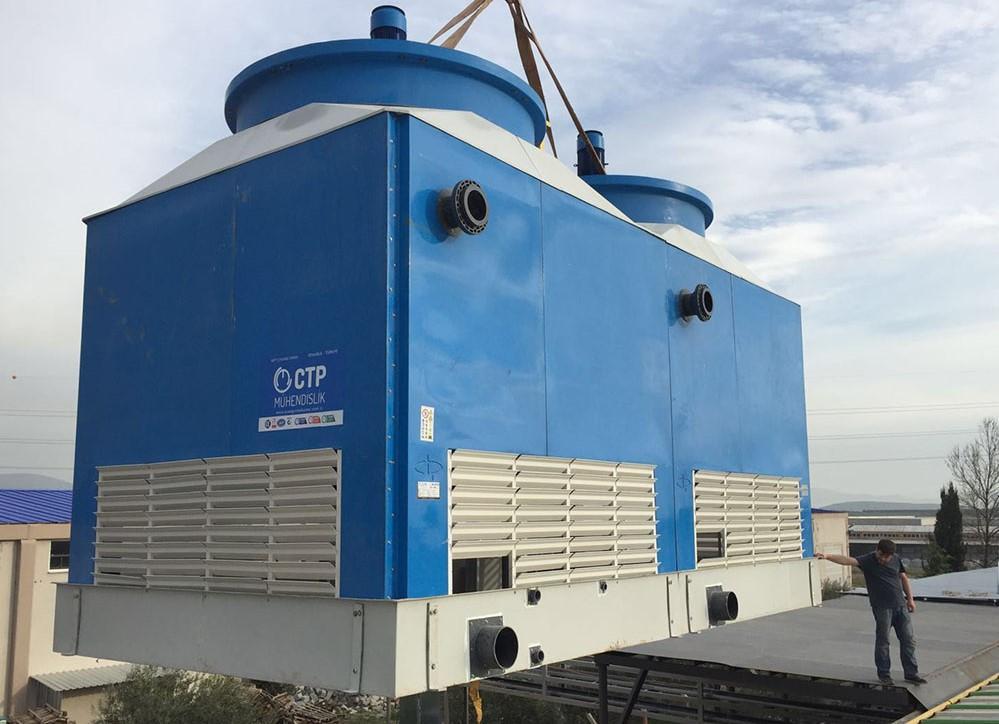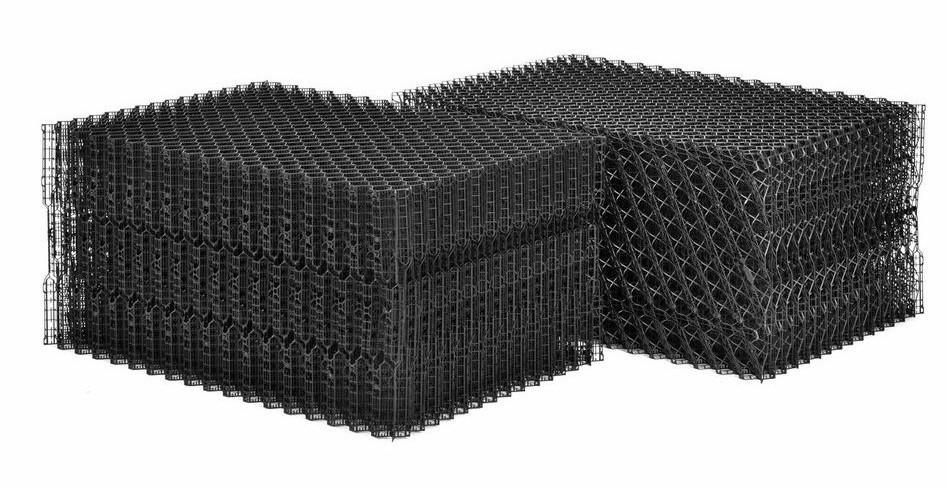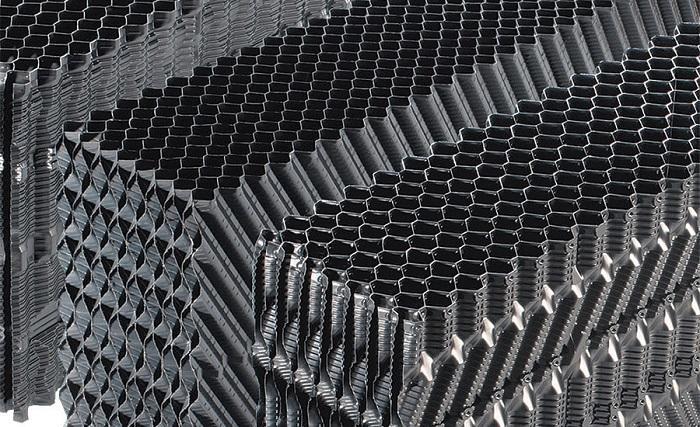As you may know a cooling tower is a heat rejection device that rejects waste heat to the atmosphere through the cooling of a water stream to a lower temperature. So cooling water is treated by cooling tower and recycled to make full use of water resources, reduce the load of urban tap water supply network, and reduce the operating cost. Now “Fill” is a medium that is used in cooling towers to increase the surface area available for the water. In order to get acquainted with cooling tower fill material and its application, follow this new blog in Linquip and enjoy it.
What is a Cooling tower fill material?
Fill, or wet deck or surface, is a medium used in cooling towers to increase the surface area of the tower. This enlarged surface area allows for utmost contact between the air and the water flow, which as a result allowing greater evaporation rates. Cooling tower fill is made of PVC or PP plain plate by specialized machine.
Some of cooling tower fill materials are made of high-temp resistant CPVC. They are hot pressed in the certain mold, and then produced according to different design to be used in different cooling towers, especially in industrial cooling tower. Today, the most commonly used film fill sheet material is rigid PVC. It is durable, provides a long service life, is excellent for wetting (conditioned to allow surfaces to be covered completely by water), is self-extinguishing and can be formed into many shapes
Different cooling tower fill material properties are as below:
PVC Cooling Tower Fills
- The most widely used type material
- Fire Classification: M2 with 42% Oxygen Index
- Working Temperature: Max. 65 °C
- Color: Black, green, blue, transparent or other
- The most important disadvantage of material is low temperature resistance. The deformation which starts by changing the PVC material form over 45 degrees causes the surface to become completely unusable by crumpling at higher temperatures.
PP Cooling Tower Fills
- High-temp resistant type material
- Working Temperature: Max. 90 °C
- Color: Black, green, blue, transparent or other
- The durability to heat is quite high.
- It protects the chemical structure and form at high temperatures.
- Acidic and basic strengths such as CTP (glass fiber reinforced polyester) are high.
- They do not show any corrosion, melting or decay, they do not give the color, odor and taste of the liquid they are in contact with.
- Their flexibility is sufficient.
- They can form smooth surfaces in molds.
- No parasitic effects, which is a very important feature in water cooling towers
- The coefficient of friction is low.
CPVC Cooling Tower Fills
- Advanced material of PVC
- High-temp resistant type material
- With 42% oxygen index
- Working temperature: Max. 100 °C
- Color: black, blue, green, transparent or other
Types of fills in cooling tower
The performance of a cooling tower is determined by many factors among which, cooling tower fill is of great importance. The fills types and quality decide whether a cooling tower is able to transfer heat efficiently or not. By choosing the right type of cooling tower fill, water will flow in much more surface area and the hot water will be cooled quickly.
There are two common types of fill media, splash fill and film fill.
- Splash Fill: Splash fill consists of layers of horizontal bars or slats. When the warm water hits the surface of these bars, it spreads, breaks, and forms small droplets. As more droplets are formed, the contact between air and water flow is increased, which as a result accelerates the rate of cooling and evaporation.
Splash fill media were traditionally made from wood, but modern cooling tower fill material is made from PVC. PVC is more efficient as it facilitates better heat transfer. A big advantage of splash fill is that it’s very forgiving of insufficient initial water distribution, since the splashing activity redistributes the water at each level of splash bars. Because of this, a cooling tower with splash fill effectively handles water containing debris. Maintenance is also easier, because its open nature offers easy visual inspection of the water flow pattern and the condition of the fill.
- Film fill: film fill provides sheets of material that are shaped into a corrugated pattern for the water to travel across. It can be combined and stacked into blocks, to create various thicknesses and heights to fit individual cooling towers. Despite the advantage of splash fill in water distribution, film fill is by far the more popular type of fill, mainly due to its ability to expose greater water surface within a given packed volume.
Cooling Tower Fill Principles of Operation
Cooling tower fill makes hot water have much more surface area with sheet and air and the medium of tremendously extended film fill so that the hot water is cooled quickly. After being cooled, the water flows in a water container from which it is pumped again to repeat this cycle.
The waste heat produced in industrial production or refrigeration process is generally driven away by cooling water. The cooling tower functions as heat exchanger between the cooling water carrying waste heat and the air in the tower.
So this is everything you need to know about cooling tower fill materials and their properties within cooling towers. If you enjoy this article at Linquip and want to share your kind of experience with us, make sure to leave your idea in the comment section. Is there any question we can help you with? Feel free to sign up on our website and make the most out of our experts’ professional advice.
Buy Equipment or Ask for a Service
By using Linquip RFQ Service, you can expect to receive quotations from various suppliers across multiple industries and regions.
Click Here to Request a Quotation From Suppliers and Service Providers
Read More In Linquip






To make a cheap cooling tower, can we use naturally occurring materials such as silica sand or limestone pellets as a fill?
Thank you for taking the time to share your thoughts with us.
This is highly specialized in its subject area and depends on several factors. Please sign up on Linquip and talk to our experts to get the most professional answer.
Need cooling tower infill box type sheet. Size hight 9 inchi, length 48 inch